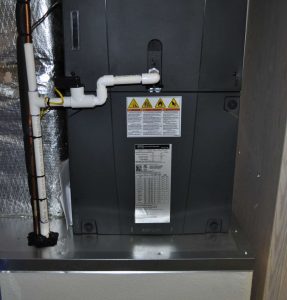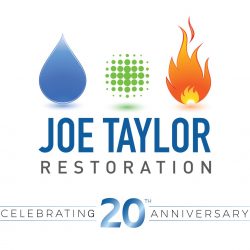HVAC Water Damage
Date
Friday, August 25, 2023
Date
Friday, August 25, 2023
 It’s August in Florida and that means it’s HOT. HVAC (Heating, Ventilation and Air Conditioning) units are failing left and right in homes and businesses all across the state, unable to keep up with the pressures of extreme heat and humidity. And that doesn’t always mean that the HVAC system just stops cooling. Often times it means that water is leaking or flooding into a property from the HVAC system, causing HVAC water damage. Unfortunately, this issue is something we see a lot at Joe Taylor Restoration (JTR), especially with high-efficiency systems that are not routinely maintained.
It’s August in Florida and that means it’s HOT. HVAC (Heating, Ventilation and Air Conditioning) units are failing left and right in homes and businesses all across the state, unable to keep up with the pressures of extreme heat and humidity. And that doesn’t always mean that the HVAC system just stops cooling. Often times it means that water is leaking or flooding into a property from the HVAC system, causing HVAC water damage. Unfortunately, this issue is something we see a lot at Joe Taylor Restoration (JTR), especially with high-efficiency systems that are not routinely maintained.
Below, we’ll explain what causes HVAC systems to leak or even flood water and how you can prevent this problem to avoid HVAC water damage.
Where Is All That Water Coming From?
Air conditioners (and high-efficiency furnaces) act like dehumidifiers. They pull moisture out of the air, which results in condensation. That water drips down the indoor coil into a drain pan. From there, the water leaves your home through a drain line, typically made of PVC pipe.
An air conditioner (AC) can produce anywhere from 20 to 50 gallons of water through condensation per day! It’s important to note that the more efficient the AC is, the more condensation it will produce. This is because new, high-efficiency air conditioners have bigger coils and move air more slowly over the coils. The larger surface area and slower movement allow more moisture to be removed as the air passes.
Why Do HVAC Systems Flood or Leak?
Now that we know where the water comes from, we’ll look at why it floods. The most common reason this happens is because dirt, dust, or debris is clogging the AC’s drain line. As a result, water can’t leave the home fast enough and ends up flooding the drain pan.
ACs can also leak water if there’s a hole or crack in the drain pan. These pans are made of metal, which means that they can corrode over time and become brittle. If enough rust forms, parts of the pan can break or flake off and make a gap through which water can leak.
How Can I Avoid Water Damage from My HVAC Equipment?
If you see water leaking through your ceiling, or if you notice water dripping out of your roof’s soffit or over a window, there’s a good chance your drain line is already clogged. The best way to avoid this issue is to get your HVAC equipment maintained twice a year: once in the spring and once in the fall.
Having a float switch installed can also be helpful. It sits in your drain pan, and when the water rises to a certain level, the device will turn your unit off to keep it from making more condensation and causing a flood. This is a smart safety net to have in place particularly if you’re upgrading to a high-efficiency system, and you’re not sure if your current drain is up to the task of handling up to 50 gallons of condensation per day.
What should I do if HVAC water damage becomes a reality in my home or business?
Sometimes even the best prevention strategies fail for one reason or another, and you end up with HVAC water damage. In that case, contact an HVAC company to get your unit back up and running, and Joe Taylor Restoration to handle the water damage. Often mold damage is also involved, especially when HVAC water damage is not discovered immediately, and JTR is prepared to address that too.
Whether it’s water, mold, fire or biohazard damage, contact Joe Taylor Restoration. We have 20 years of experience, are licensed, insured, and ready to address all your restoration needs, while also providing the absolute best in customer service.
PROVIDING AN UNMATCHED SERVICE EXPERIENCE®

